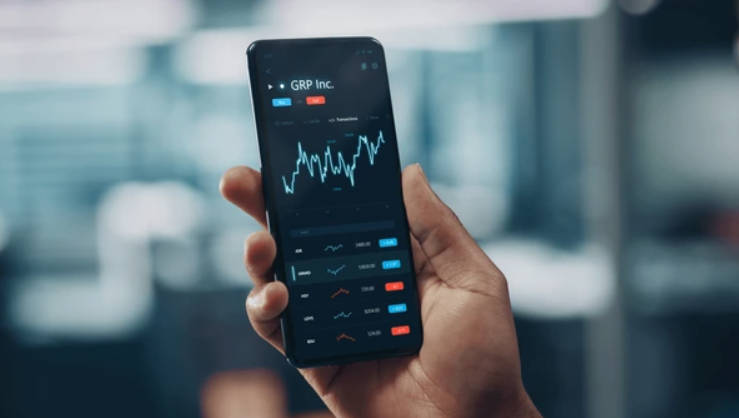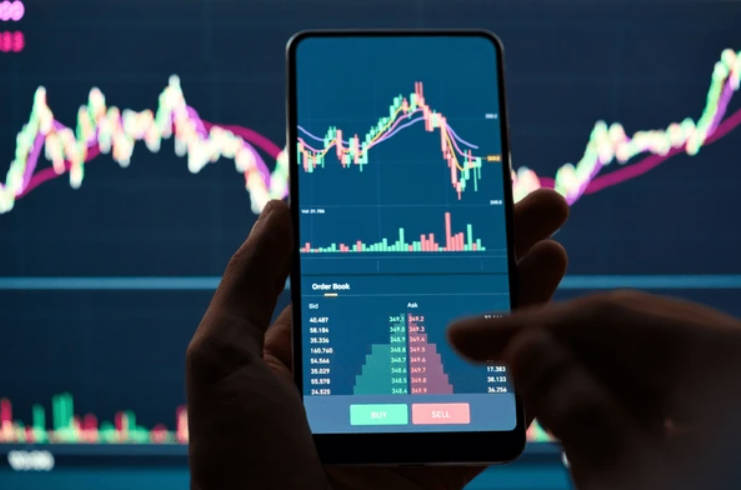
Ultima Markets App
Trade Anytime, Anywhere
Important Information
This website is managed by Ultima Markets’ international entities, and it’s important to emphasise that they are not subject to regulation by the FCA in the UK. Therefore, you must understand that you will not have the FCA’s protection when investing through this website – for example:
- You will not be guaranteed Negative Balance Protection
- You will not be protected by FCA’s leverage restrictions
- You will not have the right to settle disputes via the Financial Ombudsman Service (FOS)
- You will not be protected by Financial Services Compensation Scheme (FSCS)
- Any monies deposited will not be afforded the protection required under the FCA Client Assets Sourcebook. The level of protection for your funds will be determined by the regulations of the relevant local regulator.
Note: Ultima Markets is currently developing a dedicated website for UK clients and expects to onboard UK clients under FCA regulations in 2026.
If you would like to proceed and visit this website, you acknowledge and confirm the following:
- 1.The website is owned by Ultima Markets’ international entities and not by Ultima Markets UK Ltd, which is regulated by the FCA.
- 2.Ultima Markets Limited, or any of the Ultima Markets international entities, are neither based in the UK nor licensed by the FCA.
- 3.You are accessing the website at your own initiative and have not been solicited by Ultima Markets Limited in any way.
- 4.Investing through this website does not grant you the protections provided by the FCA.
- 5.Should you choose to invest through this website or with any of the international Ultima Markets entities, you will be subject to the rules and regulations of the relevant international regulatory authorities, not the FCA.
Ultima Markets wants to make it clear that we are duly licensed and authorised to offer the services and financial derivative products listed on our website. Individuals accessing this website and registering a trading account do so entirely of their own volition and without prior solicitation.
By confirming your decision to proceed with entering the website, you hereby affirm that this decision was solely initiated by you, and no solicitation has been made by any Ultima Markets entity.
I confirm my intention to proceed and enter this website Please direct me to the website operated by Ultima Markets , regulated by the FCA in the United KingdomWhat Is ICT in Trading: A Simple Guide
When traders first hear the term ICT in trading, they often think of computers or technology. But here, ICT stands for Inner Circle Trader, a trading strategy developed by Michael J. Huddleston.
Think of ICT as a blueprint for how the “big players” move the market. Instead of relying on colorful indicators or guesswork, ICT focuses on price action, liquidity, and market behaviour. The idea is simple: if you understand how institutions trade, you can align your own trades with them instead of being caught on the wrong side.
The ICT Trading Strategy Explained
The ICT trading strategy combines technical analysis with an understanding of how large institutions influence price. Retail traders who use ICT look for recurring patterns, imbalances, and specific times of day when price is most likely to move.
Unlike traditional methods that rely heavily on indicators, ICT provides a rules-based approach. Traders learn where price is likely to go, when to enter, and how to manage risk. This makes it appealing to those who want structure instead of emotion in their trading.

What is ICT in Trading: Key Concepts
Liquidity
Liquidity is the foundation of ICT. Price is always moving toward liquidity, because that’s where stop-loss orders and pending trades sit. Think of liquidity as pockets of fuel the market needs to grab before making its next move.
- Liquidity above highs or below lows is called external liquidity.
- Liquidity inside ranges, often found in fair value gaps, is internal liquidity.
Fair Value Gaps (FVGs)
An FVG is simply a gap left on the chart when price moves too quickly. The market often comes back to “fill” these gaps before continuing. ICT traders use them as entry zones or areas to take profit.
Market Structure
In ICT, market structure isn’t just about higher highs or lower lows. A real shift happens when price displaces strongly past a level and closes beyond it, often leaving an FVG behind. This helps traders separate genuine reversals from quick fake-outs.
Order Blocks
Order blocks are zones where institutions place large buy or sell orders. They often act like strong support or resistance areas. If you spot them on higher timeframes, they carry even more weight.
Optimal Trade Entry (OTE)
Instead of chasing a move, ICT traders wait for pullbacks into “sweet spots.” Often these are between the 0.618 and 0.702 Fibonacci levels, or where order blocks and FVGs overlap. This gives better risk-to-reward entries.
Balanced Price Range (BPR)
A BPR happens when bullish and bearish FVGs overlap. Price often returns to this “balance zone” before resuming its trend. It’s another spot ICT traders watch for entries.
Power of Three
Markets often move in three stages: accumulation, stop run, and reversal/expansion. In simple terms, the market moves sideways, tricks traders by sweeping liquidity, then makes its real move.
Kill Zones
Certain times of day matter more than others.
- The Asian session often consolidates.
- The London open usually sets the daily high or low.
- The New York session adds volume and volatility.
By trading in these “kill zones,” ICT traders aim to catch the market when it’s most active.
Why Traders Use ICT
Many retail traders lose money because they trade on emotion, chase indicators, or ignore the bigger picture. ICT offers a way to think like an institution instead of a small player.
By focusing on liquidity and market structure, ICT traders begin to see why price makes sudden spikes or sweeps. Instead of being the ones stopped out, they learn how to position themselves where the “smart money” is going. This structure helps reduce guesswork and gives traders more confidence in their setups.

Challenges of ICT
ICT isn’t a magic formula. It takes time, study, and practice to understand its many concepts. Beginners may feel overwhelmed at first by terms like FVG, MSS, or BPR. The strategy also requires patience. Not every day gives a clean setup. And even with the rules, traders still need discipline and strong risk management to succeed.
Tips for Applying ICT
If you want to start using ICT, keep it simple in the beginning. Focus first on liquidity, market structure, and fair value gaps, as these are the core building blocks. Use higher timeframes to decide the market’s direction, then drop to lower timeframes for entries.
Make sure every trade has at least a 2:1 reward-to-risk ratio, and backtest your setups before risking real money. Most importantly, stay consistent. ICT rewards traders who follow the process rather than jumping between strategies.

So What is ICT in Trading
It’s a strategy that teaches you to see the market through the eyes of institutions. By studying liquidity, order blocks, fair value gaps, and time-of-day behaviours, you can move from reacting to price to anticipating it.
For beginners, the learning curve may seem steep, but once the concepts “click,” ICT can transform the way you view trading, from chasing signals to following a structured, professional approach.
Disclaimer: This content is provided for informational purposes only and does not constitute, and should not be construed as, financial, investment, or other professional advice. No statement or opinion contained here in should be considered a recommendation by Ultima Markets or the author regarding any specific investment product, strategy, or transaction. Readers are advised not to rely solely on this material when making investment decisions and should seek independent advice where appropriate.












